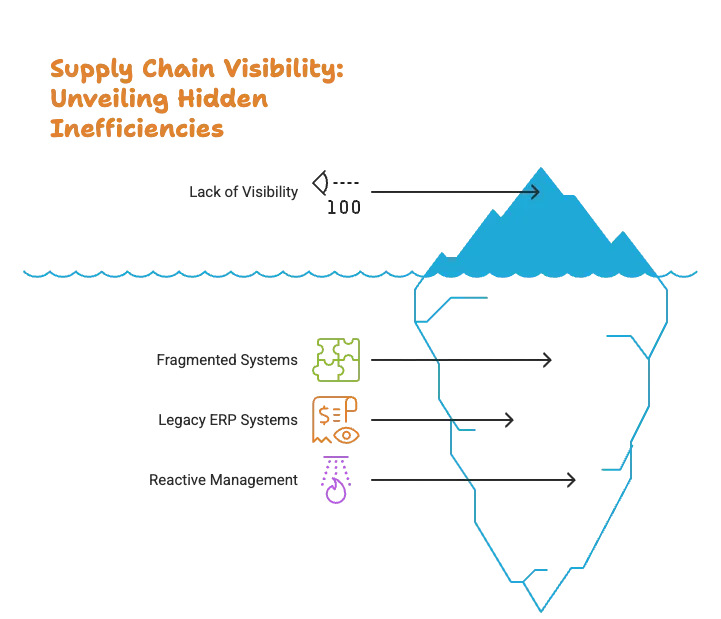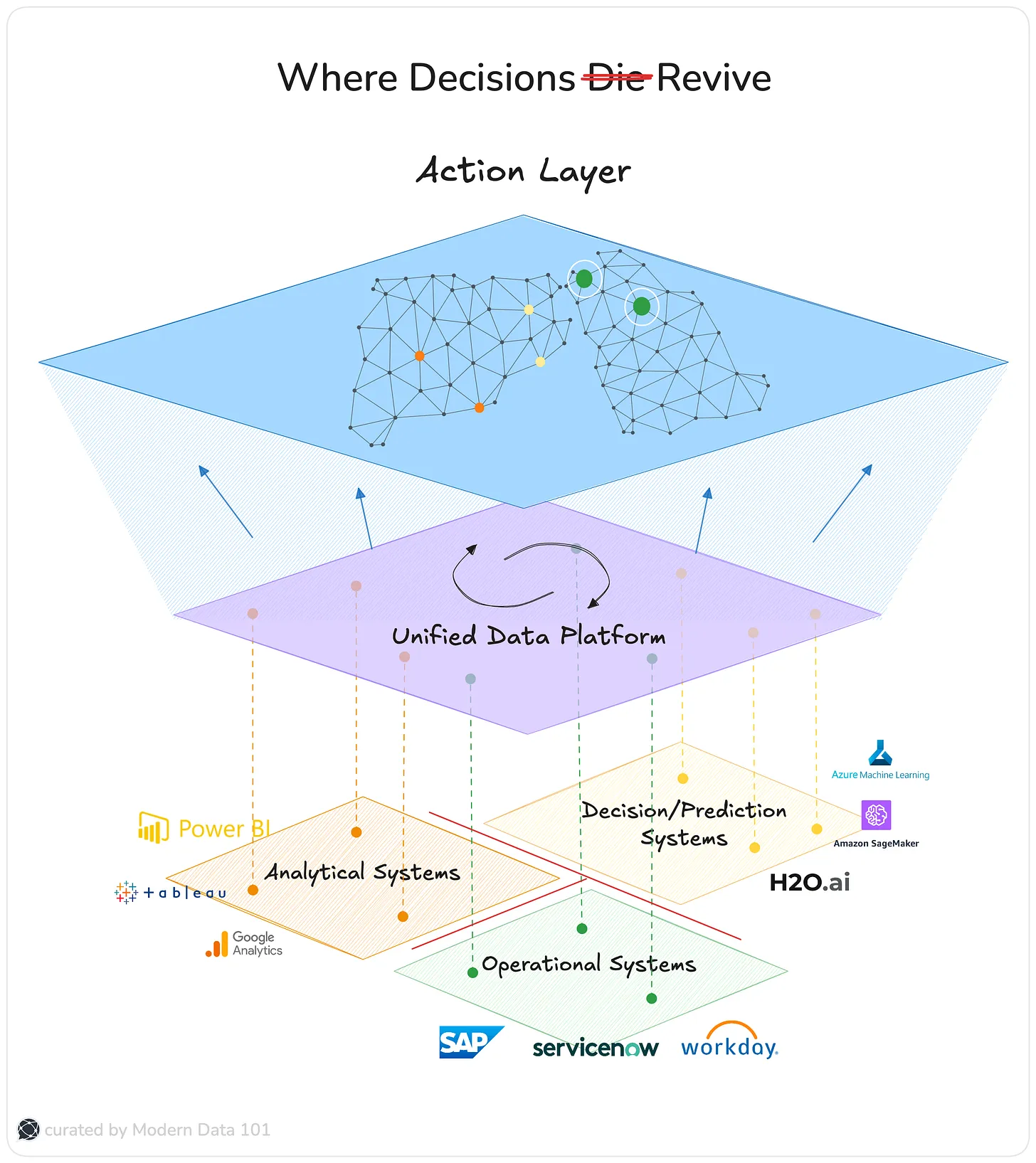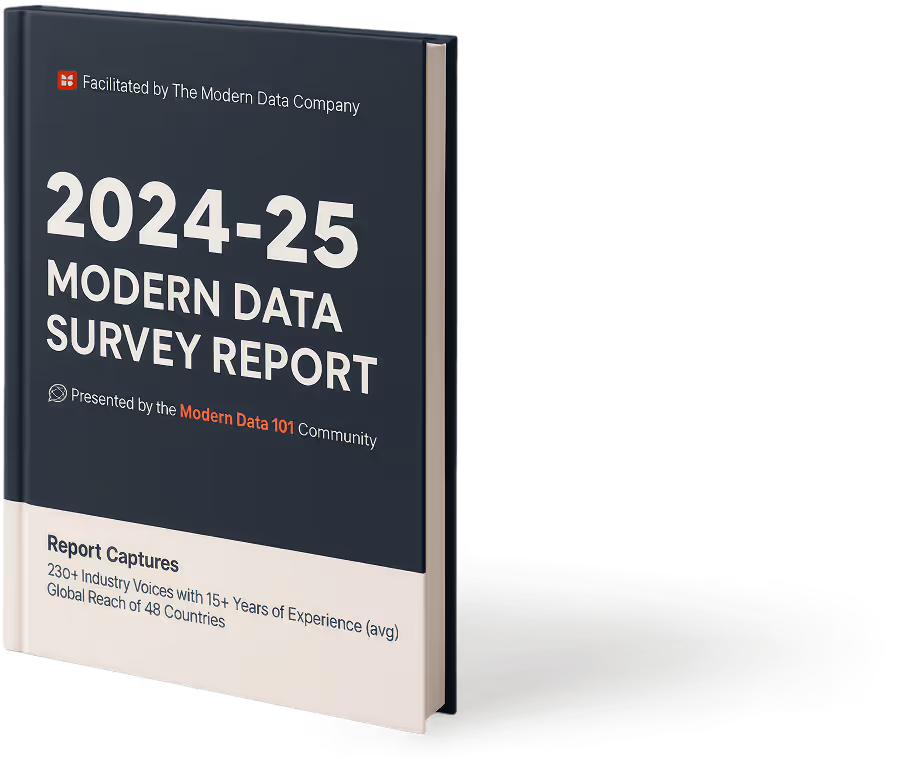
Here's your Playbook
Download now
Oops! Something went wrong while submitting the form.
Learn More
TABLE OF CONTENT

There indeed was a time when supply chains were just a back-office function. However, today, every delay, mismatch, or blind spot in the flow of goods, information, or money has a ripple effect, impacting customer trust, operational costs, and even strategic decisions.
That’s why supply chain visibility has moved from a nice-to-have to a business-critical capability. Enterprises that can see clearly across their supply chain are the ones that manage risk, respond quickly to disruptions, and keep customers satisfied, often before problems even reach the surface.
Yet, for many organisations, achieving this visibility remains frustratingly difficult. Supply chains are inherently fragmented: data lives in different systems, across multiple geographies, and with a mix of internal teams and external partners. Dashboards may show a snapshot of inventory or shipments, but they rarely tell the full story. By the time a problem is visible, it’s often too late to act.
This is where the conversation changes. Instead of some patchwork on visibility with more reports or one-off integrations, companies are now turning to data product platforms. These platforms don’t just collect data; they transform it into actionable, trusted, and reusable intelligence. With the right approach, supply chain visibility stops being a passive report and becomes a dynamic capability, powering decisions, predictive insights, and collaboration across the entire network.
In this article, we’ll explore why traditional approaches fall short, and how data product platforms can make visibility both actionable and strategic.
Supply chain visibility refers to the ability that allows the concerned personnel to see, understand, and act on the entire flow of goods, information, and finances across their supply chain, in real time. It’s not just about knowing where a shipment is or how much inventory sits in a warehouse. True visibility means having a clear, end-to-end line of sight: from raw materials to production, from logistics partners to final delivery, and from purchase orders to payments.

Why does this matter so much? Because visibility is the foundation of better decisions. With it, organisations can:
And yet, despite all the technology available, many organisations struggle with visibility. Legacy ERP systems often provide fragmented snapshots rather than continuous insight. Data is siloed across departments, vendors, and geographies. Real-time information is often limited, and dashboards sometimes create more confusion than clarity.
The results are blind spots that decelerate decisions, increase risk, and make supply chain management more reactive than strategic.
The challenge is clear: the arc of visibility extends beyond collecting data. It’s about turning that data into a coherent, trusted, and actionable story that can drive the supply chain forward.
Supply chain visibility isn’t just a “nice-to-have” metric, but it directly drives business outcomes. Here’s why it matters:
If visibility is so valuable, why do so many organisations still struggle to achieve it? The truth is, most supply chains weren’t designed with transparency in mind. They grew organically; mergers, new vendors, legacy systems layered on top of each other, and the result is a patchwork that’s hard to navigate.
Here are the biggest hurdles organisations face today:
The result? Decision-makers function with partial truths, reacting to problems instead of anticipating them at the right time. Visibility remains shallow, useful for reporting, but not enough to drive confident business actions when it is most required.
The cracks in today’s supply chain visibility efforts don’t come from a lack of tools or dashboards. They come from a lack of a foundation that can actually hold the supply chain together as one connected system. That’s what a data product platform brings to the table.
Rather than being another layer of software, a data product platform acts as the infrastructure for creating, managing, and sharing data products, the building blocks of a modern supply chain. These aren’t static reports or one-off integrations. Data products are reusable, trusted, and domain-aligned units of data that teams can use across procurement, logistics, finance, and beyond. Think of them as the “raw materials” of intelligence, packaged in a way that anyone can discover, understand, and apply.
Know why your team needs data products for improved success metrics.
Most often, supply chain management relies heavily on the ability to bring together data from suppliers, warehouses, logistics networks, and customers. Most organisations have turned to enterprise data platforms to achieve this, but these systems often struggle when applied to real-world visibility challenges.
The issue lies in certain data platform architectures that are built to centralise and process data, but not necessarily to align it with supply chain domains.
Where traditional data platforms focus on pipelines and storage, a data product platform shifts the focus to outcomes.
What decisions need to be made, what visibility is required, and how data can be trusted at scale. It’s built on product thinking, where each dataset is treated as a product with owners, accountability, quality measures, and a clear purpose. That’s a very different model from legacy BI or ERP add-ons, which often just serve up more dashboards without solving the trust and usability gap.

A data product platform's capabilities that enable this shift:
The platform connects ERP systems, IoT sensors, logistics feeds, partner APIs, and financial systems into one coherent layer of data products. No more chasing silos; the platform creates a single view that’s discoverable and reusable.
These insights replace lags in weekly reports. Event-driven pipelines and streaming data keep the supply chain live on your radar. Delays, shortages, or demand spikes are easily viewable as they happen and act before they spiral.
Visibility isn’t useful if it stays trapped in one department. A data product platform makes it possible to share products across procurement, logistics, sales, and finance. So everyone is working off the same source of truth.
Every product comes with lineage, quality checks, and clear accountability. Teams know where the data comes from, how reliable it is, and who is responsible. This removes the second-guessing that plagues most supply chain decisions today.
With trusted, well-structured data products in place, organisations can bring in AI agents to detect anomalies, forecast demand, or optimise supply routes. Instead of dashboards that show what has already gone wrong, the platform enables predictive and even prescriptive intelligence.
A data product created for one supplier or region doesn’t need to be rebuilt for another. It can be extended, adapted, and applied across the chain. That’s how visibility scales without reinventing the wheel every time the supply chain grows or shifts.
Related Reads
The impact of data product strategy on different decision makers across an organisation here.
Getting value out of a data product platform isn’t about switching it on and expecting magic. It’s about being deliberate in how you design and use it.
A few things to keep in mind:
Map your supply chain domains and data sources
Visibility begins with knowing what you want to see. Break down the supply chain into domains, procurement, logistics, inventory, finance, and identify the data sources that matter for each. This mapping exercise keeps you from building in the dark.
Define KPIs and outcomes for every data product
A data product should never just be “a dataset.” It needs a purpose. Whether it’s forecasting demand, tracking supplier reliability, or monitoring shipment delays, tie each product to a clear outcome or KPI. That’s how you measure real impact.
Build domain-aligned data products with clear accountability zones
Data without ownership is where most visibility projects fail. Assign accountability so each domain knows which data products they own, maintain, and guarantee quality for. This keeps the chain of trust intact.
Enable self-service discovery, lineage, and governance
The real advantage of a platform is when people can find and trust data products without waiting on another team. Bake in discoverability, lineage tracking, and governance upfront so every stakeholder can confidently use the products.
Scale gradually with feedback loops
Don’t try to solve the entire supply chain in one go. Start small, prove value, and then expand. Use feedback loops to refine products, retire what’s not working, and scale what delivers consistent visibility and impact.
The payoff of using a data product platform for supply chain visibility is clear. Decisions get made faster and with more confidence. Risks and costs are reduced because problems are caught earlier. Collaboration across suppliers and internal teams becomes smoother, since everyone is working from the same trusted source of truth. Most importantly, visibility stops being a static report and becomes actionable intelligence, a capability that helps organisations stay agile when disruptions hit.
But the real story is about where this is headed. The next generation of supply chains won’t just react faster; they’ll be reflexive, enabled by AI agents and data products that continuously learn, adapt, and optimise. Predictive and prescriptive analytics won’t sit on the sidelines; they’ll be embedded directly into operations. Every cycle will generate reusable data products that feed improvement loops, making the supply chain smarter and more resilient over time.
The shift is already underway. Organisations that keep relying on legacy dashboards or fragmented systems will only ever see pieces of the puzzle. Those that embrace product-thinking-enabled platforms will move toward supply chains that are data-enabled, adaptive, and self-learning ecosystems.
The question isn’t whether supply chains need visibility that much is obvious. The question is whether your visibility will remain passive and fragmented, or whether you’ll reimagine it as a living, connected capability built on data products. The answer will decide how ready your supply chain is for the future.
Q1: What is a supply chain?
A supply chain refers to the connected network of people, processes, technology, and organisations involved in the production, movement, and delivery of a product or service from raw materials to the end customer.
Q2: What is supply chain risk management?
Supply chain risk management is the process of identifying, assessing, and mitigating potential disruptions in a supply chain to minimise operational, financial, and reputational impact.
Q3: What is supply chain visualisation?
Supply chain visualisation is the clear, often visual, representation of the flow of materials, information, and finances across a supply chain, enabling faster insights, better decision-making, and easier identification of bottlenecks or risks.
Related:
